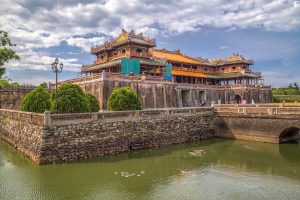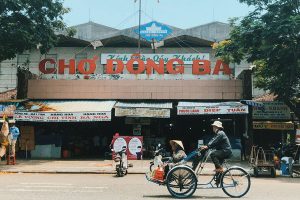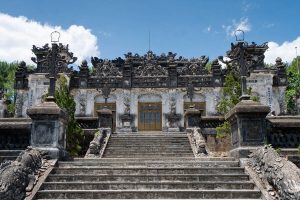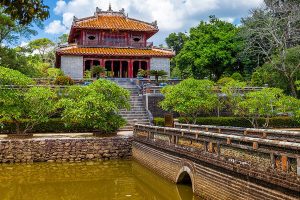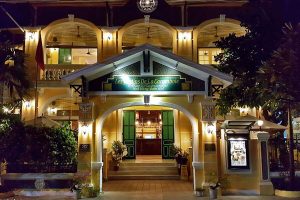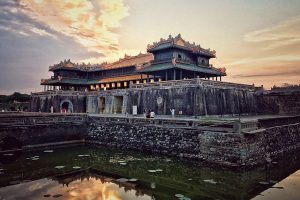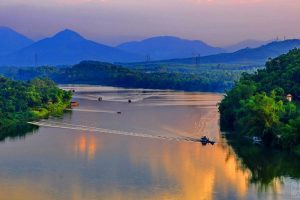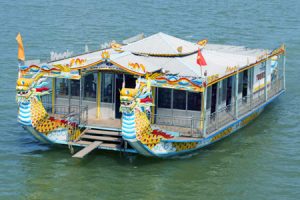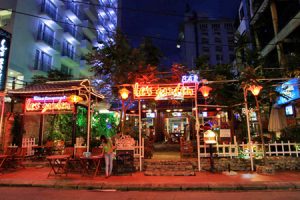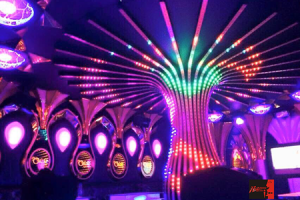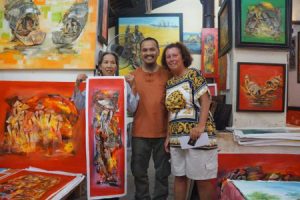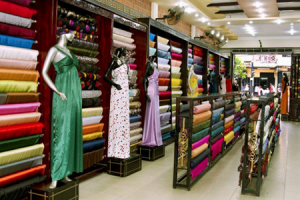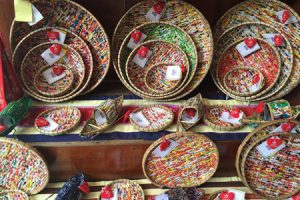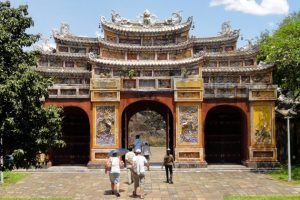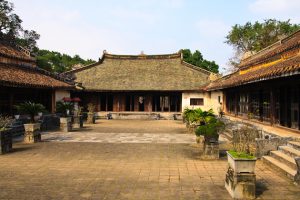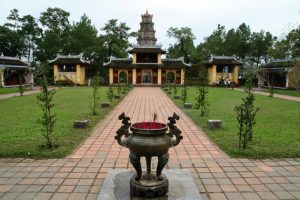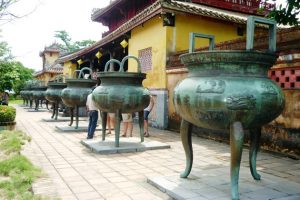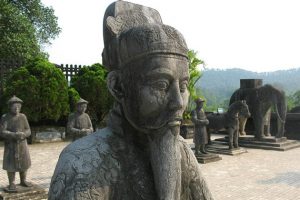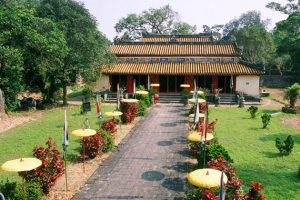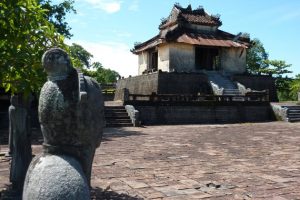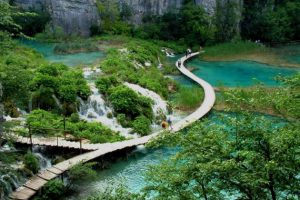Hue Highlights
Hue is a city of Thua Thien – Hue Province, located in the central coastal plain of Vietnam. It is a national-level city of Vietnam and used to be the country’s capital during the Nguyen feudalism (1802-1945). Nowadays, the city is the leader of many sectors of central area such as culture, politics, healthcare, education, tourism, science, and the must-see Vietnam attraction in Vietnam tour packages.
Climate
Lying in the tropical climate area, the weather of Hue occurs according to a cycle of 4 seasons, warm in Spring, hot in Summer, cool in Autumn, and freezing windy in Winter. The annual average temperature is 25 degrees Celsius. The total shining hours a year are 2000 hours. The most suitable season for visiting is from November to April.
What makes Hue day tours impressive most is “Hue rain” which is considered a kind of “specialty” of Hue and often begins from September every year. Those constant rains have appeared in the nostalgic paintings of the ancient capital. “Hue rain” is also an endless inspiration of local people who are stimulated to create many kinds of arts suitable for enjoying music, poetry, tea or meditation. Hue has many café, hotel and restaurant systems decorated according to rain theme. The people here have transited this unfavorable condition to a favorable one to develop their craft and souvenir industry like hats, umbrellas, raincoats, cyclos, dragon boats, etc.
Culture
Hue has been established and developed for about 7 centuries (from 1306). And during that quite long duration, it has accumulated precious material and spiritual values to form a traditional culture of Hue. Although that culture carries its own characteristic and regional features and also is influenced by other cultures from different countries such as Asian countries, China, India, Western countries, it is not separated into the mutual features of the national tradition and culture.
Its culture is featured by spiritual specialty, diversity in forms, richness, and uniqueness in contents which present in diverse fields namely literature, music, art, custom, and practice, festivals, behaviors, communication, lifestyles, etc.
Architecture
Hue’s architecture is rich and diverse including imperial palace architecture, folk architecture, religious architecture, temple architecture, traditional architecture, and modern architecture. The most meticulous and massive architectural works are Hue Imperial City and The Complex of Hue Monuments. Those historical and cultural monuments were built under Nguyen Dynasty from the 19th to 20th century on the ancient capital Hue compass.
Costume
Ao dai and non la are considered symbols of Vietnam, and the combination of ao dai and non la is recognized by Vietnamese people that it is originated from Hue. Ao dai is typically in purple in Hue, which makes ao dai become a kind of heritage of the city – an ancient citadel.
Festivals
There are various types of folk festivals typically such as Hue Nam Festival in Hon Chen Temple – a festival to honor the Holy Mother Thien Y A Na according to Champa religion, festivals to honor those who create traditional occupations, festivals to honor Village Former Gods. During the festivals, many useful cultural activities are organized like boat racings, tugging, wrestling, etc., attracting a huge number of visitors.
Hue Festivals was first held in 2000 and was held every two years since then. This is a big cultural event on a national and global scale, which creates favorable conditions for Hue to become a festival city of Vietnam.
Cuisine
Hue is the city that is not only well-known for its glorious and magnificent tombs, its peaceful and dreamy natural combination of water and mountains, but it also is the “capital of cuisine” which would definitely charm tourists. Hue’s dishes are just simple and plain like the graceful beauty of people in the Central area. No matter where you enjoy the dishes, in restaurants or of street vendors, you will surely feel all the unique featured flavors of Hue in the dishes. If you have arrived Hue, don’t miss those delicious specialties representing Hue cuisine.
That people are keen on enjoying tasty food is not only because of their hunger but because of the spiritual joy that they receive from the food as well. For Hue people, eating and drinking are considered kinds of arts and are delectation in life. By the time, Hue affected by different cultural waves from different communities and combined with its own religious elements has formed itself unique cuisine, becoming a part of its culture and also Vietnamese culture.
There are more than 1000 courses cooked in Hue’s traditional ways including those that used to be served the Nguyen King. The menu for the King contained dozens of good cheers that are cooked in an exquisite, meticulous and flowery way. Basic foods are very popular among the public with an abundant menu of hundreds of dishes that are skillfully cooked and have charming flavors and attractive colors. People weigh the quality of the food over its quantity and also pay much attention to the art of decorating the food and the art of minutely enjoying the food.
Tourism
Some of Hue historical relics have been recognized as World Heritage by UNESCO. Nowadays, a minor area remains prohibited, although people are making a great effort to fine-tune it so that it can soon become a historical site attracting tourists.
Along Perfume River (Huong River), there are myriad other relics including King’s tombs (such as Minh Mang king, Khai Dinh king and Tu Duc king). Thien Mu – the largest pagoda of Hue – is considered the official symbol of the city.
Some structures that were built based on French architecture lie along the southern bank of Perfume River such as Hue National School – the oldest high school of Viet Nam where Ho Chi Minh President and Vo Nguyen Giap General were the top first students or Hai Ba Trung High School.

